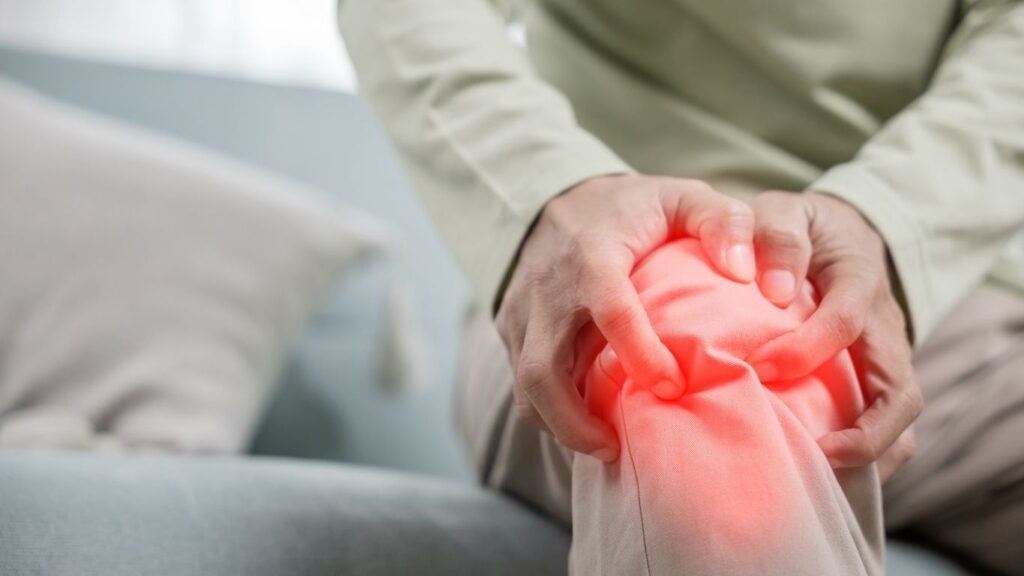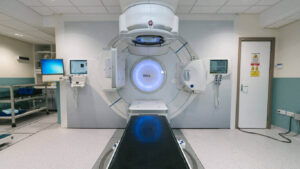Lymphedema and Joint Stiffness: Causes and Relief Strategies
Definition of Lymphedema and Joint Stiffness
Lymphedema and joint stiffness are two often interconnected conditions that can significantly affect a person’s quality of life. Lymphedema refers to the buildup of lymph fluid in tissues, leading to swelling—often in the arms or legs. This condition can result from damage to the lymphatic system, which is responsible for draining excess fluid and waste products from the body. Joint stiffness, on the other hand, refers to a reduction in the normal range of motion in the joints, often resulting in pain and discomfort. While they may seem like separate issues, these two conditions can exacerbate each other, leading to more severe symptoms and mobility challenges.
Importance of Understanding the Relationship Between the Two Conditions
Understanding the relationship between lymphedema and joint stiffness is essential, especially for individuals living with these conditions. Lymphedema can cause chronic swelling that puts pressure on joints, which, over time, can lead to stiffness and pain. This combination can hinder mobility and make everyday activities—such as walking, climbing stairs, or even dressing—more difficult. Additionally, people who suffer from lymphedema, particularly those whose condition is caused by cancer treatment, may find that their symptoms worsen without proper care and attention.
Overview of the Blog Post Structure
In this blog post, we will explore the causes of lymphedema and joint stiffness, their symptoms and effects on daily life, and provide relief strategies to manage these conditions effectively. Whether you’re dealing with lymphedema as a result of cancer surgery or another underlying cause, we’ll cover both medical treatments and lifestyle changes that can help improve your quality of life.
Understanding Lymphedema
Explanation of Lymphedema and Its Causes
Lymphedema is caused by an imbalance in the lymphatic system. This system, composed of lymph nodes, vessels, and tissues, is responsible for maintaining fluid balance and immune function in the body. When something disrupts the flow of lymph fluid, swelling can occur, usually in the arms and legs. Primary lymphedema is a rare condition where the lymphatic system is underdeveloped or abnormal from birth. More commonly, secondary lymphedema results from an injury to or damage to the lymphatic system, such as from cancer treatment or cancer surgery.
Primary vs. Secondary Lymphedema
Primary lymphedema, though less common, is inherited and typically develops in childhood, adolescence, or adulthood. Secondary lymphedema, on the other hand, is much more prevalent and occurs as a result of an obstruction or damage to the lymphatic system. This type of lymphedema can be caused by various factors, including cancer and its treatments, particularly when cancer treatment (like radiation or surgery) disrupts the normal flow of lymph fluid. Breast cancer survivors, for instance, are at an increased risk of lymphedema if the lymph nodes in the underarm area are removed or damaged during surgery.
Risk Factors and Common Triggers
Several factors can increase the risk of developing lymphedema. These include cancer surgery, particularly when the lymph nodes are involved, and radiation treatment for breast cancer or other types of cancer. Infections, trauma, or obesity can also cause disruption in the lymphatic system, leading to swelling and lymphedema symptoms. Lifestyle factors such as prolonged immobility or a sedentary lifestyle can exacerbate symptoms.
Symptoms and Impact on Daily Life
The primary symptom of lymphedema is noticeable swelling in the affected area, often in the arms and legs. This swelling may be mild at first but can become more pronounced over time if left untreated. Individuals with lymphedema may also experience a feeling of heaviness or tightness in the affected limb, along with pain, itching, or limited mobility. In severe cases, the skin may become thickened and hard, and there is a heightened risk for infections in the affected areas.
When lymphedema affects your arm or leg, it can significantly impact daily activities, such as walking, dressing, or carrying out simple household tasks. The swelling can be both physically and emotionally draining, making it essential to take proactive steps to manage the condition.
Connection Between Lymphedema and Joint Stiffness
Over time, untreated or poorly managed lymphedema can contribute to joint stiffness. The buildup of lymphedema fluid in the tissues causes pressure on surrounding structures, including the joints. This pressure can restrict movement, leading to stiffness and pain. Furthermore, when the affected area becomes swollen and inflamed, the body may compensate by altering the way it moves, placing extra strain on joints and muscles, which can result in long-term stiffness.
Joint Stiffness: Causes and Implications
Definition and Common Causes of Joint Stiffness
Joint stiffness refers to a reduced range of motion in the joints, often causing discomfort and difficulty in movement. The primary cause of joint stiffness is inflammation, which can result from conditions like arthritis (both osteoarthritis and rheumatoid arthritis) or injuries. However, joint stiffness can also arise from immobility, where a lack of movement leads to the stiffening of muscles and joints. Inflammation can also be triggered by swelling caused by lymphedema, making the situation worse.
Arthritis and Other Inflammatory Conditions
The most common cause of joint stiffness is arthritis, an inflammatory condition that affects the cartilage and bones in the joints. Conditions like rheumatoid arthritis and osteoarthritis can result in pain and stiffness, especially in the knees, hips, and fingers. For people with lymphedema, the additional swelling in the limbs can compound the joint stiffness, making movement even more challenging.
Impact of Immobility and Swelling
When a person is unable to move a joint due to pain, swelling, or discomfort, the muscles around the joint can weaken, and the joint itself can become stiffer over time. This can create a vicious cycle: joint stiffness makes movement harder, leading to more swelling and lymphedema, which, in turn, worsens joint stiffness. It’s important to manage both conditions together to prevent further complications.
How Lymphedema Contributes to Joint Stiffness
Lymphedema can exacerbate joint stiffness in several ways. The swelling caused by lymphedema increases pressure on the joints, reducing the space available for movement. Over time, this pressure leads to the stiffening of the joints, making them harder to move. As the lymphatic system is unable to drain fluid effectively, the buildup of lymph fluid continues, creating more swelling and increasing the risk of joint stiffness.
Symptoms and Effects on Mobility and Quality of Life
Joint stiffness from lymphedema can significantly affect an individual’s mobility, making it harder to perform routine tasks. Simple activities like getting out of bed, walking, or climbing stairs may become a struggle. As joint stiffness worsens, it can lead to a more sedentary lifestyle, which in turn can contribute to further lymphedema and muscle atrophy. The impact on quality of life is profound, affecting everything from personal independence to emotional well-being.
Relief Strategies for Lymphedema and Joint Stiffness
Medical Treatments and Therapies
There are several medical treatments available to help manage both lymphedema and joint stiffness. These treatments aim to reduce swelling, improve mobility, and prevent further complications.
Compression Therapy
Compression therapy is one of the most commonly used treatments for lymphedema. Special garments, such as compression sleeves or stockings, are worn to help manage swelling by applying pressure to the affected area. This pressure helps move lymph fluid through the body and can reduce swelling over time. Compression therapy can also prevent the progression of lymphedema, helping to reduce the risk of developing more severe symptoms.
Physical Therapy and Exercise
Physical therapy is crucial for managing joint stiffness and improving mobility. A physical therapist can help design an exercise program tailored to your specific needs. Low-impact exercises like walking, swimming, and stretching can increase joint flexibility and reduce stiffness. When combined with lymphedema treatment, physical therapy can enhance circulation, alleviate discomfort, and improve overall movement.
Lifestyle Modifications
In addition to medical treatments, lifestyle changes can also play a significant role in managing lymphedema and joint stiffness.
Diet and Hydration
A balanced diet rich in anti-inflammatory foods, such as leafy greens, omega-3 fatty acids, and antioxidants, can help reduce swelling and inflammation. Staying properly hydrated is also essential, as it helps maintain fluid balance and supports lymphatic drainage. Reducing sodium intake can further help minimize swelling caused by lymphedema.
Importance of Regular Movement and Stretching
Maintaining a regular movement routine is crucial for preventing joint stiffness and lymphedema from worsening. Gentle stretching and mobility exercises help keep joints flexible and improve blood circulation. Even small, consistent movements can make a significant difference in managing both conditions.
Alternative Therapies and Self-Care Practices
In addition to conventional treatments, many people with lymphedema and joint stiffness find relief through alternative therapies like massage therapy, lymphatic drainage, and acupuncture. These practices can help improve lymphatic flow, reduce swelling, and enhance relaxation. Always consult with a healthcare provider before beginning any new treatment or therapy to ensure it’s safe and effective for your specific condition.
Conclusion
Recap of the Relationship Between Lymphedema and Joint Stiffness
Lymphedema and joint stiffness often go hand-in-hand, with swelling caused by lymphedema leading to pressure on the joints and a reduced range of motion. Together, they can create a cycle of discomfort, limited mobility, and diminished quality of life.
Emphasis on the Importance of Early Intervention and Management
Addressing lymphedema and joint stiffness early on is crucial. With the right combination of medical treatments, physical therapy, and lifestyle adjustments, it’s possible to manage both conditions and prevent further complications. Early intervention can help you maintain your independence and overall well-being.
Encouragement for Readers to Seek Professional Advice and Support for Their Conditions
If you or someone you know is struggling with lymphedema or joint stiffness, it’s essential to seek professional advice. A healthcare provider can help develop a personalized treatment plan that includes both medical and lifestyle interventions. Managing these conditions with the right support can help improve your quality of life and prevent more severe issues down the line.
FAQs
1. What are the most common causes of lymphedema?
The most common causes of lymphedema include cancer treatment (such as surgery or radiation), infections, trauma, and obesity. It can also develop as a result of surgery for cancer where lymph nodes are removed or damaged.
2. How can I prevent lymphedema from getting worse?
Preventing lymphedema from getting worse involves regular compression therapy, maintaining good hydration, avoiding tight clothing, and performing gentle exercises to keep the lymphatic system flowing.
3. Is there a cure for lymphedema?
Unfortunately, there’s no cure for lymphedema. However, with the right treatment, including compression therapy and lifestyle adjustments, lymphedema can be managed and its symptoms kept under control.
4. Can joint stiffness caused by lymphedema be reversed?
While joint stiffness caused by lymphedema can be alleviated with treatments like physical therapy and compression, complete reversal may not always be possible. However, stiffness can often be reduced with regular exercise and movement.
5. How does cancer treatment cause lymphedema?
Cancer treatment, including surgery and radiation, can damage or remove lymph nodes, disrupting the flow of lymph fluid and causing swelling. This leads to secondary lymphedema, particularly in breast cancer survivors and other cancer patients.





